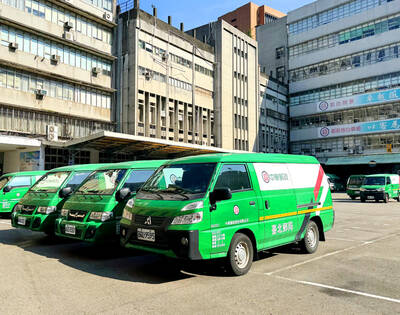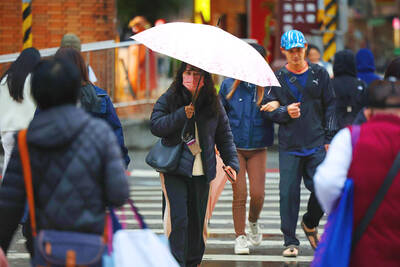On Tuesday, as President Tsai Ing-wen (蔡英文) commemorated the 228 Incident with a group of 228 victims and their families, a seminar in Taipei was taking place at about the same time attended by relatives of those who also suffered during the Incident and the subsequent White Terror era.
While both sets of people agree that the corrupt nature of the then-Chinese Nationalist Party (KMT) regime brought about the uprising that preceded the KMT’s violent suppression, they differ in how they identify themselves. The former consider themselves Taiwanese, while the latter see themselves as Zhonguoren (中國人, Chinese) and support the ideology and rule of the Chinese Communist Party.
The names of the two organizations behind the seminar are revealing. The Taiwan Area Political Victims Mutual Help Association and the Taiwan Region Association for the Settlement of Martial Law Era Political Incidents can be easily differentiated from the Democratic Progressive Party (DPP)-friendly Formosan Political Prisoner Association. Their political views are clear: Their referral to Taiwan as the “Taiwan area” is an effort to show that Taiwan is politically part of the “Mainland area.” The term is also used in the Republic of China (ROC) Constitution.
The two associations, along with the China Tide Association, the Labor Party and the Cross-Strait Peace and Development Union, are known as the “unificationist leftist faction” (統左派). The inception of this movement can be traced back to the Japanese colonial era, when the Taiwanese Communist Party was a branch of the Japanese Communist Party and to the early post-1945 period, when the “underground party” affiliated with the Chinese Communist Party thrived — and was later crushed.
They describe the Incident and the White Terror era in the 1950s as “China’s lesion inflicted by a 100 years of imperialism” and ascribe the cross-strait division to the actions of US imperialists.
The leftist unificationist faction survived the long Martial Law era, when any left-leaning speeches or thinking were instantly quashed, and the period of democratization, when such ideas were still viewed with suspicion — both due to the residue of the past and antagonism against communist China.
They are therefore not to be conflated with the Concentric Patriotism Association (CPA), founded in 1993, and the China Unification Promotion Party (CUPP), launched in China in 2004 and registered in Taiwan in 2005 by former Bamboo Union leader Chang An-le (張安樂), also known as the White Wolf. While these two groups also champion unification with China, Chinese nationalism for them trumps all other causes as the foremost and only concern.
There is an alternative pro-unification faction on the other side of the political spectrum, the right-wing pro-unification faction, made up of the Chinese Nationalist Party (KMT) and the New Party, a KMT spinoff formed in 1993 due to disagreements with then-KMT chairman Lee Teng-hui (李登輝).
Moderate KMT members might be less inclined to embrace the idea, but as KMT Chairwoman Hung Hsiu-chu (洪秀柱) keeps saying, the objective of the KMT and the ROC it brought with it to Taiwan decades ago has always been to unify China under the banner of the ROC rather than the People’s Republic of China.
The relations between the three factions is curious, as they are not inherently potential allies as might be presumed, particularly the leftist and the right-wing factions, whose ideological agendas apparently contradict each other.
The CPA and the CUPP are more or less kept at a distance by the KMT, understandably due to the former’s notoriously irrational behavior, such as attacking Falun Gong practitioners and brandishing People’s Republic of China five-star flags (bizarrely alongside ROC flags), and the latter’s organized crime background.
On the other hand, it is not surprising that the leftist unificationist faction has traditionally viewed the KMT in a negative light, considering that the regime executed and persecuted hundreds of left-leaning sympathizers and communist members in Taiwan.
At the seminar on Tuesday, speakers said that the Incident should not be appropriated by Taiwanese independence forces as the inchoate beginning of a pro-independence mentality, as it was a popular uprising against a corrupt and repressive KMT regime.
Shih Hsin University professor Wang Hsiao-po (王曉波) at one point called it “the Taiwan version of the entire nation’s [China] anti-Chiang [Kai-shek] movement.”
This narrative would certainly not be echoed by those who are striving to delegitimize the Incident by claiming (unsubstantiated) numbers of Mainlanders were killed by ethnic Taiwanese as the justification for the ensuing government-led “putting down of a riot.”
“Some of our anti-Taiwanese independence friends have been trying to cite the fact Mainlanders were also killed by the mob during the uprising, but that is not the right interpretation,” Wang said, adding that irrationality is always an aspect of popular movements and that Chinese intelligentsia in regions outside of the KMT’s control were also supportive of the uprising.
The leftist unificationist groups are on warm terms with communist China, which they refer to as the motherland, although they have no answer for how today’s China represents a socialist revolution rather than a capitalist free-for-all.

SHIPS, TRAINS AND AUTOMOBILES: The ministry has announced changes to varied transportation industries taking effect soon, with a number of effects for passengers Beginning next month, the post office is canceling signature upon delivery and written inquiry services for international registered small packets in accordance with the new policy of the Universal Postal Union, the Ministry of Transportation and Communications said yesterday. The new policy does not apply to packets that are to be delivered to China, the ministry said. Senders of international registered small packets would receive a NT$10 rebate on postage if the packets are sent from Jan. 1 to March 31, it added. The ministry said that three other policies are also scheduled to take effect next month. International cruise ship operators

NUMBERS IMBALANCE: More than 4 million Taiwanese have visited China this year, while only about half a million Chinese have visited here Beijing has yet to respond to Taiwan’s requests for negotiation over matters related to the recovery of cross-strait tourism, the Tourism Administration said yesterday. Taiwan’s tourism authority issued the statement after Chinese-language daily the China Times reported yesterday that the government’s policy of banning group tours to China does not stop Taiwanese from visiting the country. As of October, more than 4.2 million had traveled to China this year, exceeding last year. Beijing estimated the number of Taiwanese tourists in China could reach 4.5 million this year. By contrast, only 500,000 Chinese tourists are expected in Taiwan, the report said. The report

Temperatures are forecast to drop steadily as a continental cold air mass moves across Taiwan, with some areas also likely to see heavy rainfall, the Central Weather Administration (CWA) said. From today through early tomorrow, a cold air mass would keep temperatures low across central and northern Taiwan, and the eastern half of Taiwan proper, with isolated brief showers forecast along Keelung’s north coast, Taipei and New Taipei City’s mountainous areas and eastern Taiwan, it said. Lows of 11°C to 15°C are forecast in central and northern Taiwan, Yilan County, and the outlying Kinmen and Lienchiang (Matsu) counties, and 14°C to 17°C

STEERING FAILURE: The first boat of its class is experiencing teething issues as it readies for acceptance by the navy, according to a recent story about rudder failure The Hai Kun (海鯤), the nation’s first locally built submarine, allegedly suffered a total failure of stern hydraulic systems during the second round of sea acceptance trials on June 26, and sailors were forced to manually operate the X-rudder to turn the submarine and return to port, news Web site Mirror Daily reported yesterday. The report said that tugboats following the Hai Kun assisted the submarine in avoiding collisions with other ships due to the X-rudder malfunctioning. At the time of the report, the submarine had completed its trials and was scheduled to begin diving and surfacing tests in shallow areas. The X-rudder,